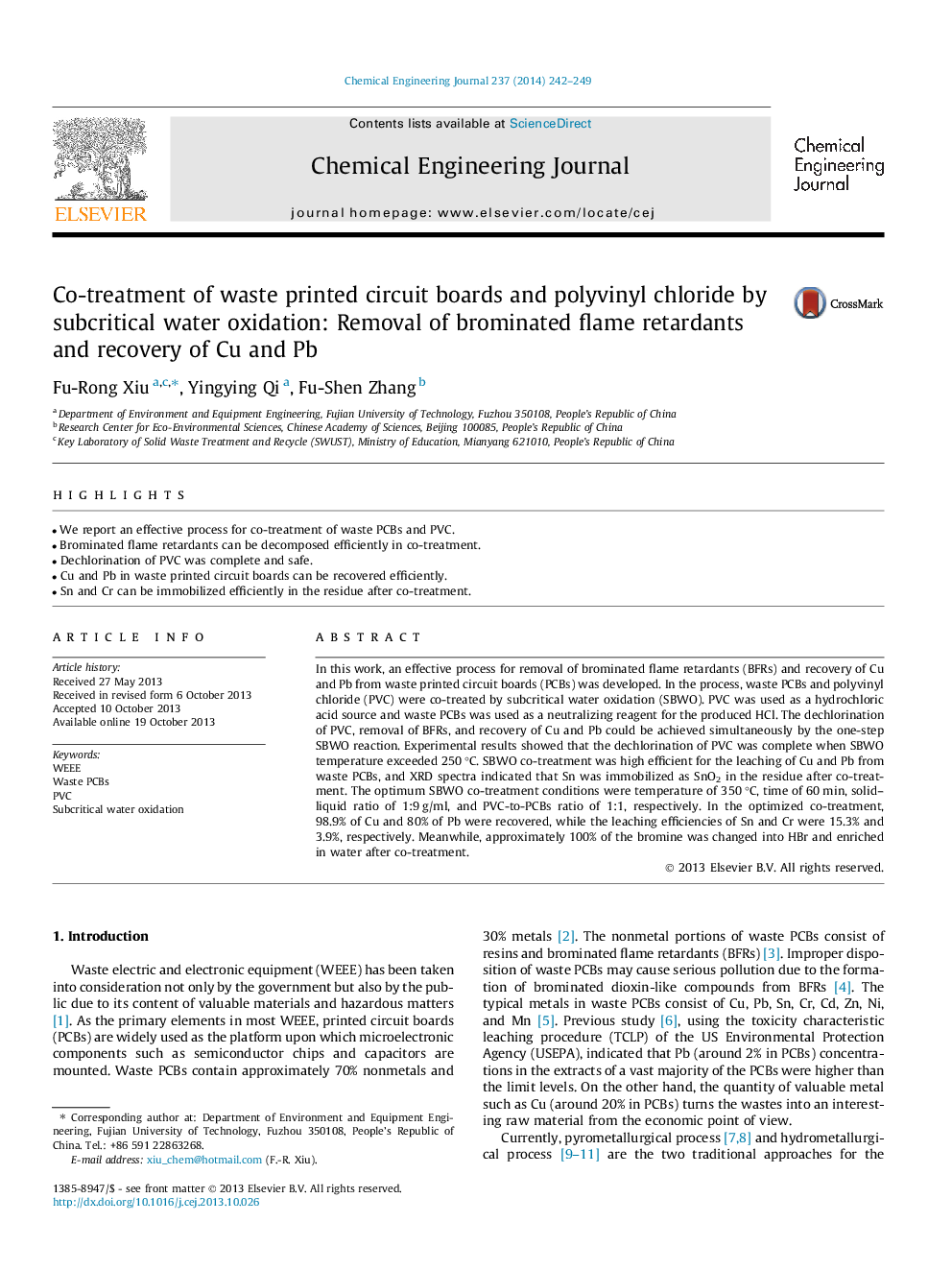| Article ID | Journal | Published Year | Pages | File Type |
|---|---|---|---|---|
| 148205 | Chemical Engineering Journal | 2014 | 8 Pages |
•We report an effective process for co-treatment of waste PCBs and PVC.•Brominated flame retardants can be decomposed efficiently in co-treatment.•Dechlorination of PVC was complete and safe.•Cu and Pb in waste printed circuit boards can be recovered efficiently.•Sn and Cr can be immobilized efficiently in the residue after co-treatment.
In this work, an effective process for removal of brominated flame retardants (BFRs) and recovery of Cu and Pb from waste printed circuit boards (PCBs) was developed. In the process, waste PCBs and polyvinyl chloride (PVC) were co-treated by subcritical water oxidation (SBWO). PVC was used as a hydrochloric acid source and waste PCBs was used as a neutralizing reagent for the produced HCl. The dechlorination of PVC, removal of BFRs, and recovery of Cu and Pb could be achieved simultaneously by the one-step SBWO reaction. Experimental results showed that the dechlorination of PVC was complete when SBWO temperature exceeded 250 °C. SBWO co-treatment was high efficient for the leaching of Cu and Pb from waste PCBs, and XRD spectra indicated that Sn was immobilized as SnO2 in the residue after co-treatment. The optimum SBWO co-treatment conditions were temperature of 350 °C, time of 60 min, solid–liquid ratio of 1:9 g/ml, and PVC-to-PCBs ratio of 1:1, respectively. In the optimized co-treatment, 98.9% of Cu and 80% of Pb were recovered, while the leaching efficiencies of Sn and Cr were 15.3% and 3.9%, respectively. Meanwhile, approximately 100% of the bromine was changed into HBr and enriched in water after co-treatment.
